“Thilo Kehrer: The man PSG ‘stole’ from Barcelona”
This was the headline posted by Spanish publication Marca when Thomas Tuchel’s side signed the Schalke defender from the clutches of Barcelona. Thilo Kehrer is another product in a long line of defenders that have flourished when given the opportunity in the Bundesliga. The world-renowned Schalke academy has produced numerous talents over the years that have gone on to become world class players. Manuel Neuer, Mesut Özil, Leroy Sane, Max Meyer, and Leon Goretzka are just a few.
The German may not have ended up at Paris Saint-German with the French club initially focusing on Jerome Boateng. Eventually they opted for Kehrer, keeping Boateng at Bayern Munich for one more season. Kehrer will have to compete with Presnel Kimpembe and Marquinhos for a starting spot alongside the experienced Thiago Silva.
His career originated with his move to Schalke in 2012 and he soon made his way into the under-19 squad. He guided them to the under-19 Bundesliga title in 2014/15. This opened up the doors to the first team and he became a back-up player to Benedikt Höwedes and Naldo.
Once he settled into the team, Kehrer’s ability was evident from the get-go. Consistent performances impressed Europe’s elite and earned him a move to Paris Saint-Germain. This analysis will use statistics to look into the strengths and qualities that the young German defender will bring to PSG.
Evolution: PSG’s playing style
Thomas Tuchel has experimented with a number of systems since joining the Parisians in the summer. The team lacks balance with an outrageous amount of attacking and defensive talent but not enough midfielders. Angel Di Maria has been a star performer for the Parisians throughout the season but the presence of Neymar and Kylian Mbappe means Tuchel can’t start all three players together.
Having used Di Maria as a central midfielder in a 4-3-3 and a winger in a 4-2-3-1, Tuchel has not been able to find the perfect solution all season without sacrificing one area of the pitch. They usually employ a 4-3-3 which has been used by all of Tuchels predecessors, but he needs to evolve the team by finding another solution to their long-founded problems that have plagued the team’s progression in recent years.
Physical specimen
One of Kehrer’s biggest capabilities is his versatility. Naturally he’s a centre-back, but is equally adept at playing right-back, having done so on many occasions for the German national team. Having also played as a defensive midfielder, Kehrer’s versatility gives Thomas Tuchel an option to make numerous tactical changes to his starting XI.
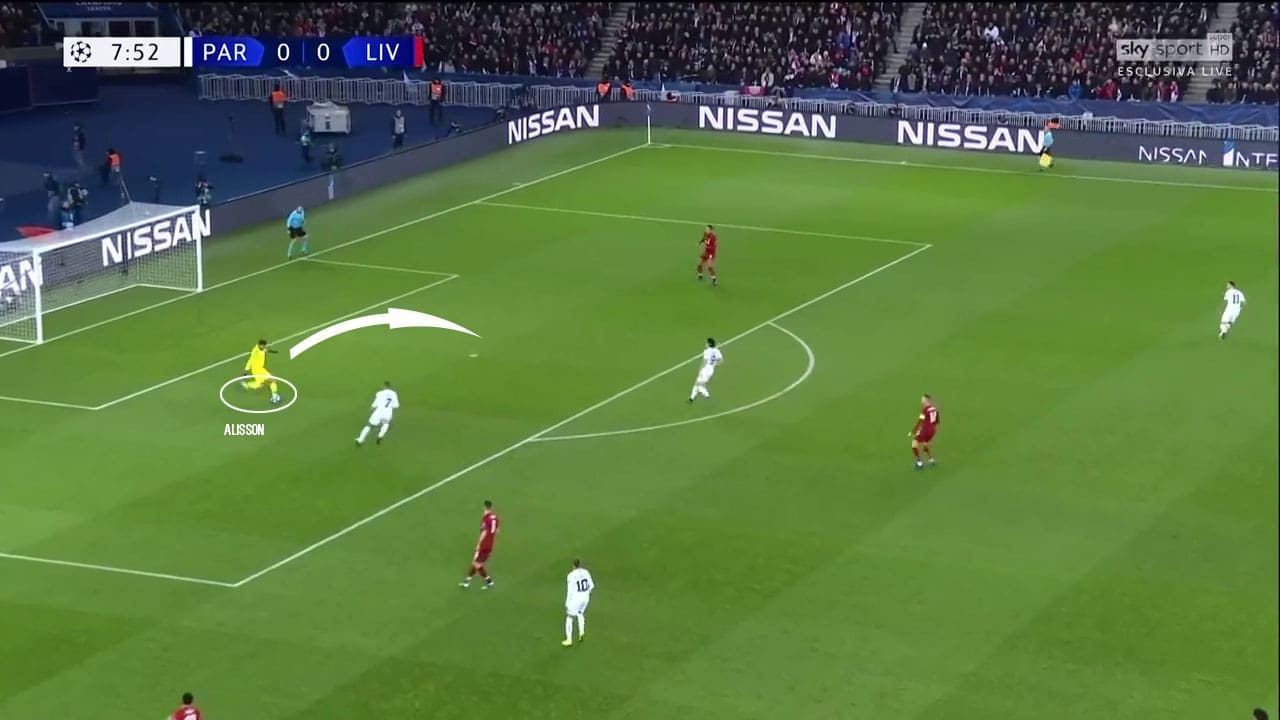
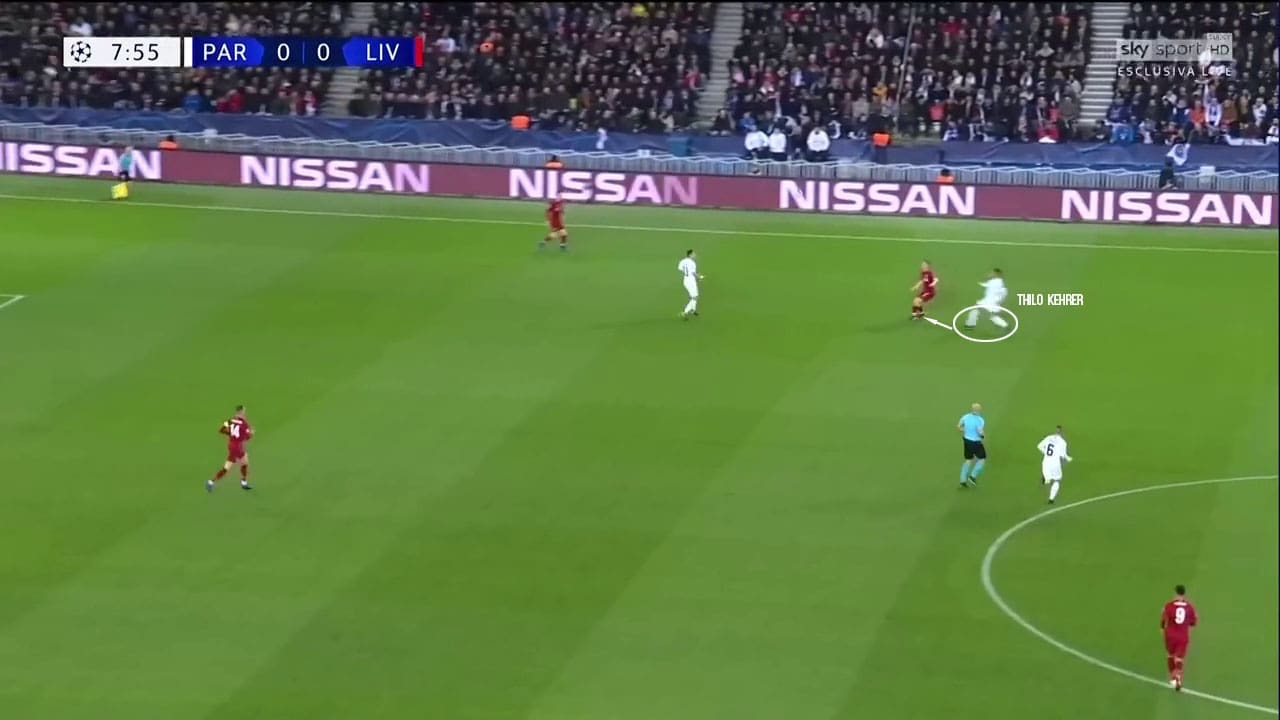
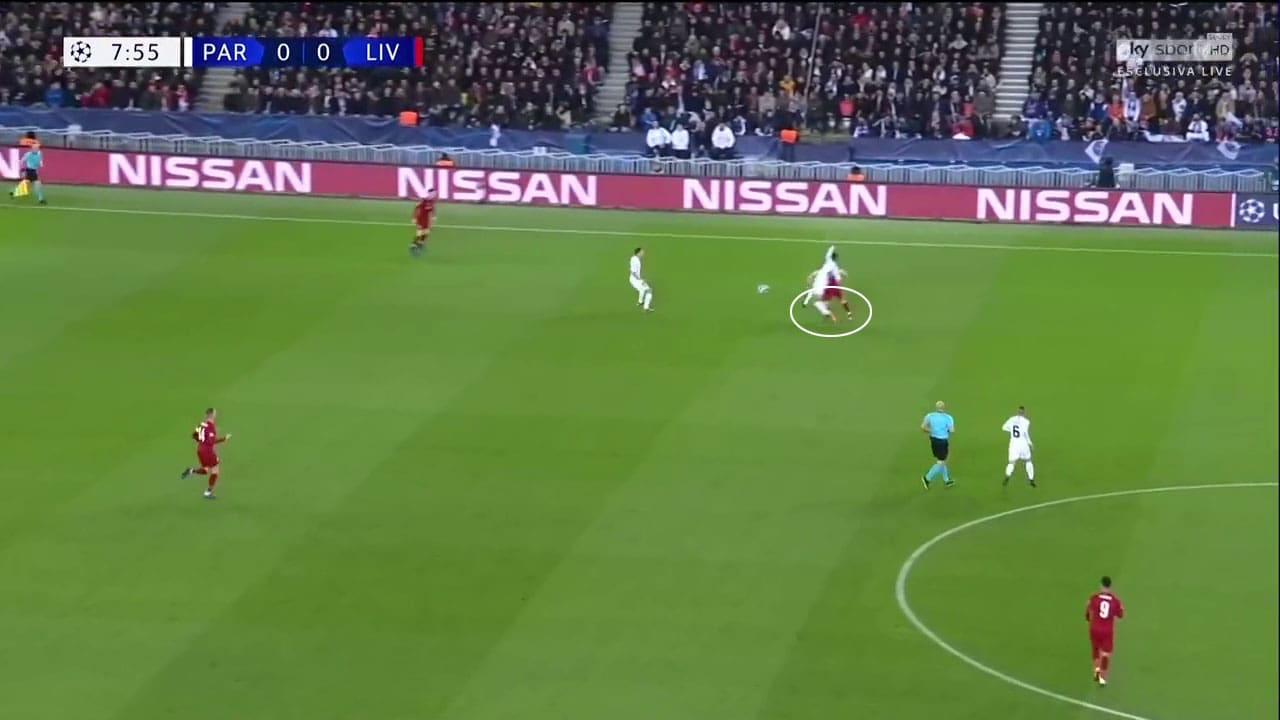
After watching Thilo Kehrer this season, one notices his immense physical ability and athleticism. Kehrer’s enthusiastic style of defending has seen him rush out often trying to hurry opposition players into making mistakes by misplacing a pass or successfully tackling them. While his role can be classified as a stopper, Kehrer’s speed and dynamism gives him room to fill in any gaps left in behind him by other players.
Coupled with great anticipatory skills, Kehrer’s aggressive playing style is slightly negated by his speed. However, playing at centre-back requires extra precision with positioning, and having the experienced presence of Thiago Silva should allow him to flourish and learn valuable lessons on the job that can’t be replicated on the training pitch.
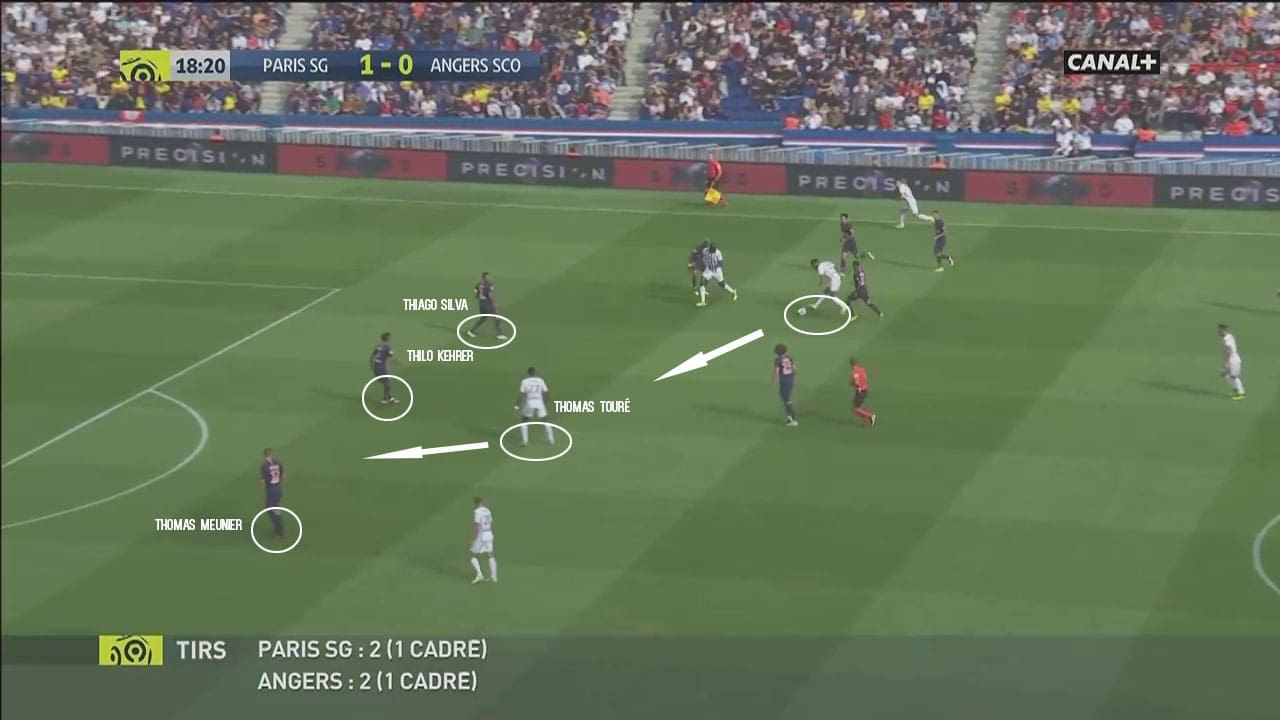
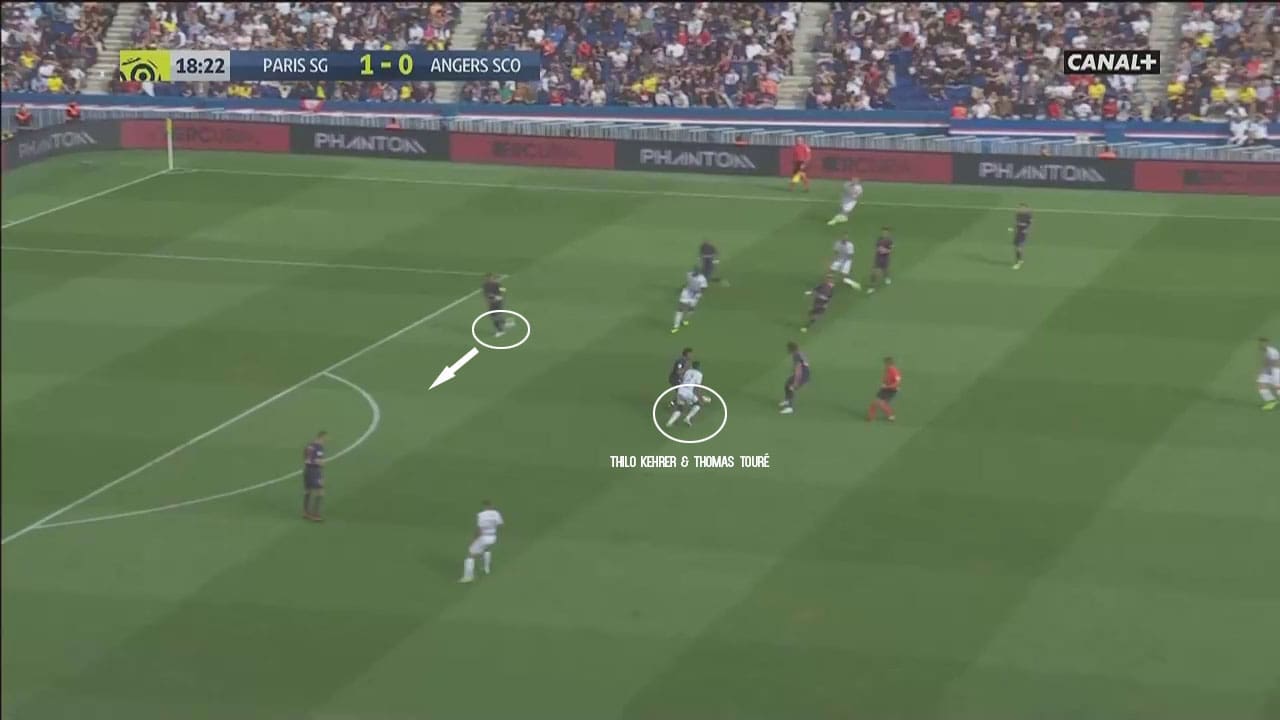
In this situation against Angers, Kehrer has spotted the imminent danger Thomas Touré poses in front of him. The forward will look to exploit the space between Kehrer and Thomas Meunier. He steps out to aggressively close down Touré before he can take a touch.
In any centre-back pairing, there are certain triggers that indicate to each partnership to start certain movements. When Kehrer steps out to close down the striker, it prompts Silva to move across and cover the space in behind Kehrer. Not only does this reduce the chance of an opponent getting a free run into the box, but it demonstrates a mutual understanding and constant communication between the pairing.
Being exceptional communicators can have a hand in positioning. As I alluded to earlier, positioning is a vital attribute, but even more so for a defender whose primary responsibility is to protect their goal at all costs. The margin for error is small and a lapse in concentration can lead to a goalscoring opportunity for the opposition.
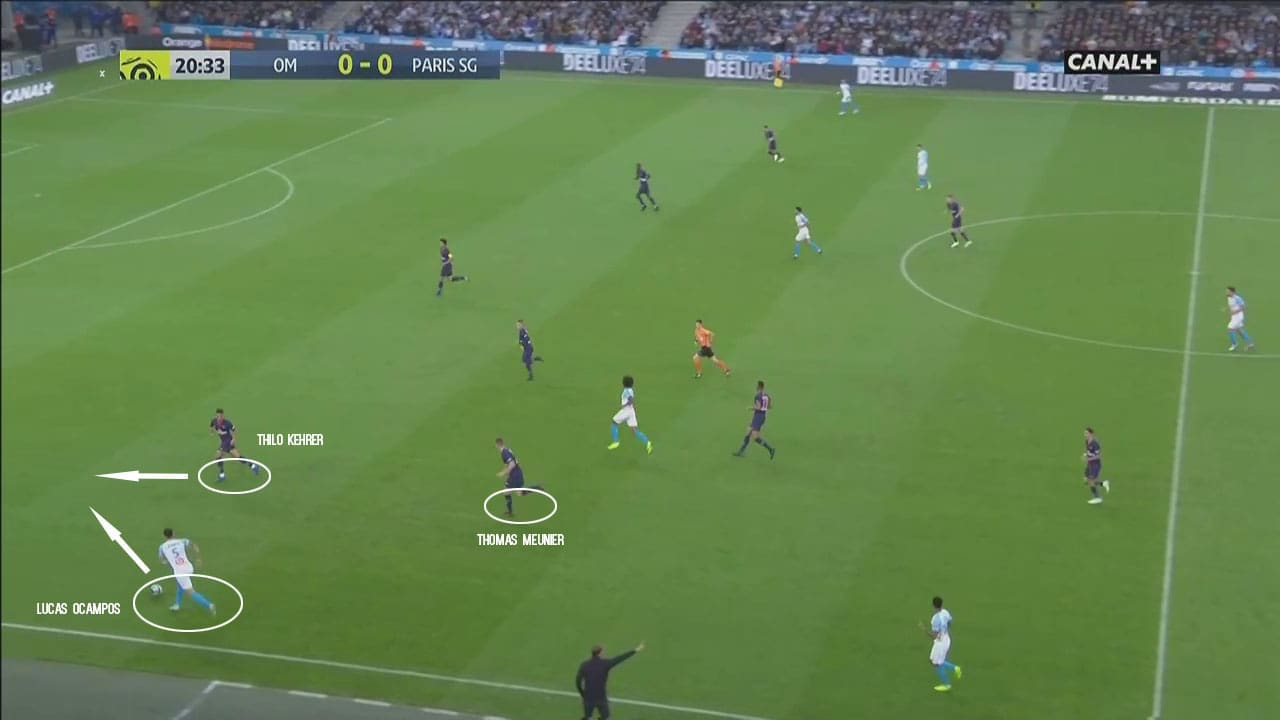
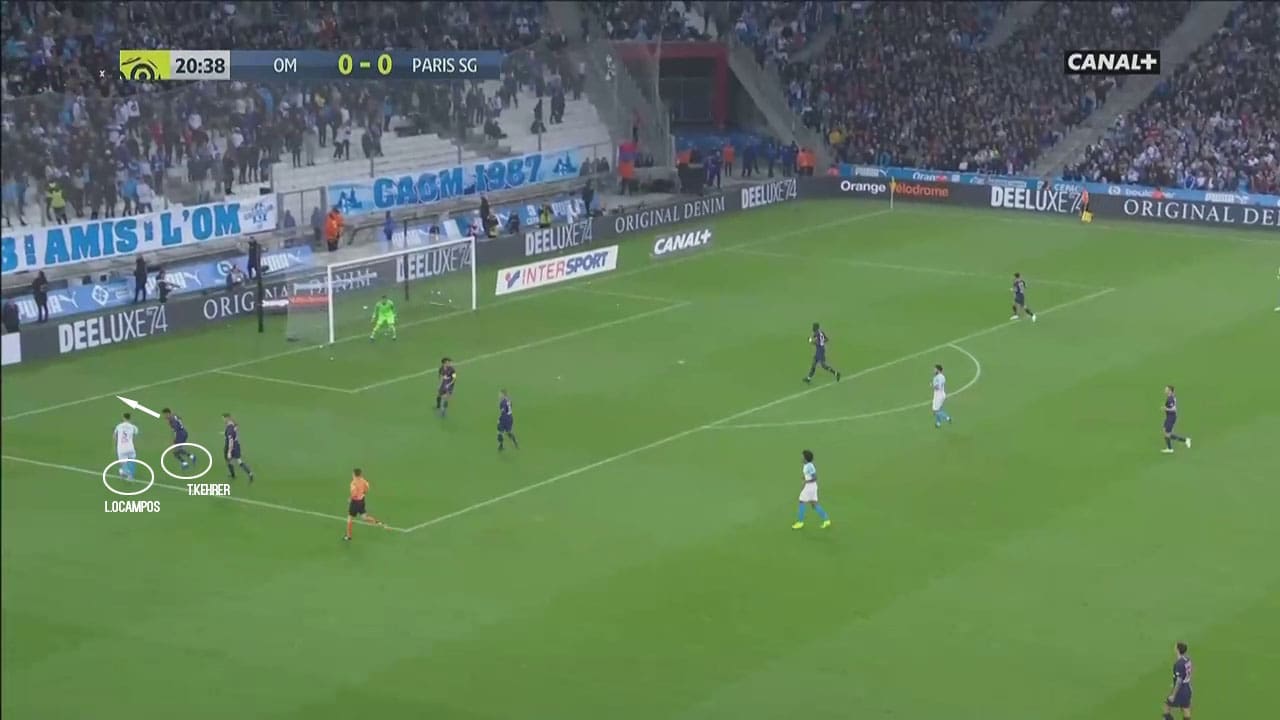
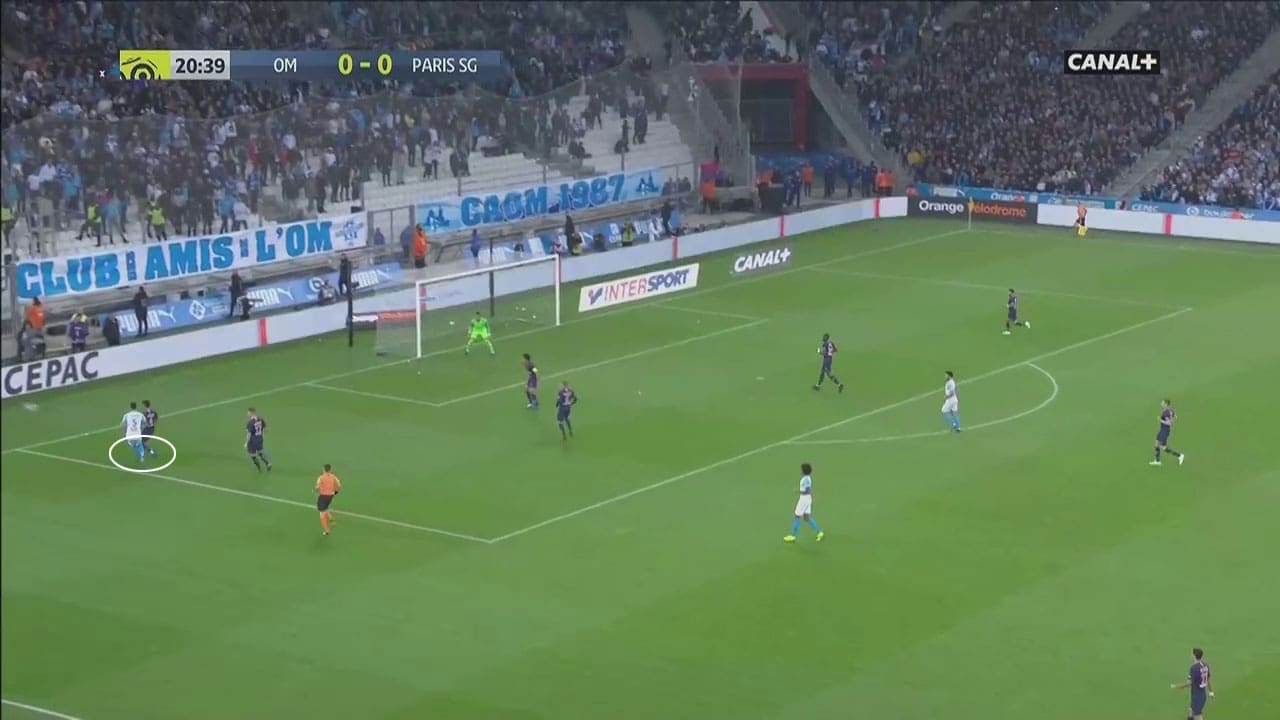
The above examples against Olympique Marseille show Thomas Meunier out of position. Kehrer fills in for the full-back, but notice Meunier going across towards the centre-back position to cover up Kehrer’s original position. The communication and chemistry between the PSG defenders are evident. Kehrer’s versatility is on display here with his ability to force Lucas Ocampos down the wing and mark him more tightly as space runs out.
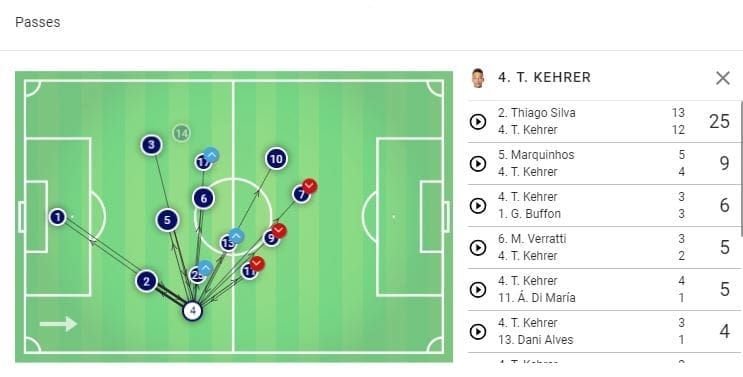
The UEFA Champions League game against Liverpool saw PSG playing in a 4-4-2 formation with Kimpembe (#3), Silva (#2) and Kehrer (#4) make up three of the back four. Marquinhos (#5) was deployed at defensive midfield partnering Marco Verratti (#6) in the double pivot. Notice Kehrer’s position is closer to Thiago Silva than a traditional right-back. Playing as an inverted right-back, this was employed to counter-act Liverpool’s dynamism and speed of the front three that consists of Mohammed Salah, Sadio Mané, and Roberto Firmino.
Kehrer’s pace and experience in playing at both right-back and centre-backs allow him to better mark and nullify the Liverpool attacking trio. Notice Marquinhos’ position as the half-back, sitting in between Kimpembe and Silva acting as a sweeper and allowing PSG to smoothly transition into a back five when being attacked.
Kehrer can get away with his positioning whilst playing a formation with three centre-backs because of the extra man to cover up space. Although his playing style has delivered some fantastic results, it has also caused a few deliveries to slip by.
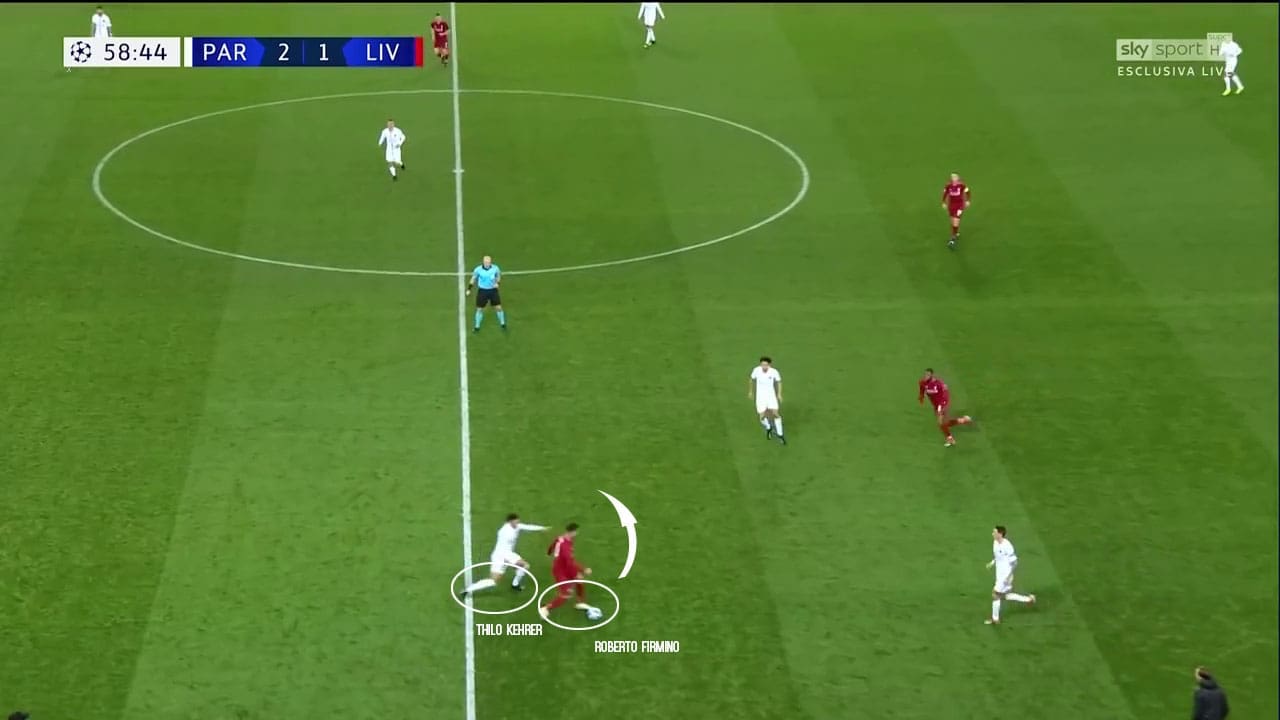
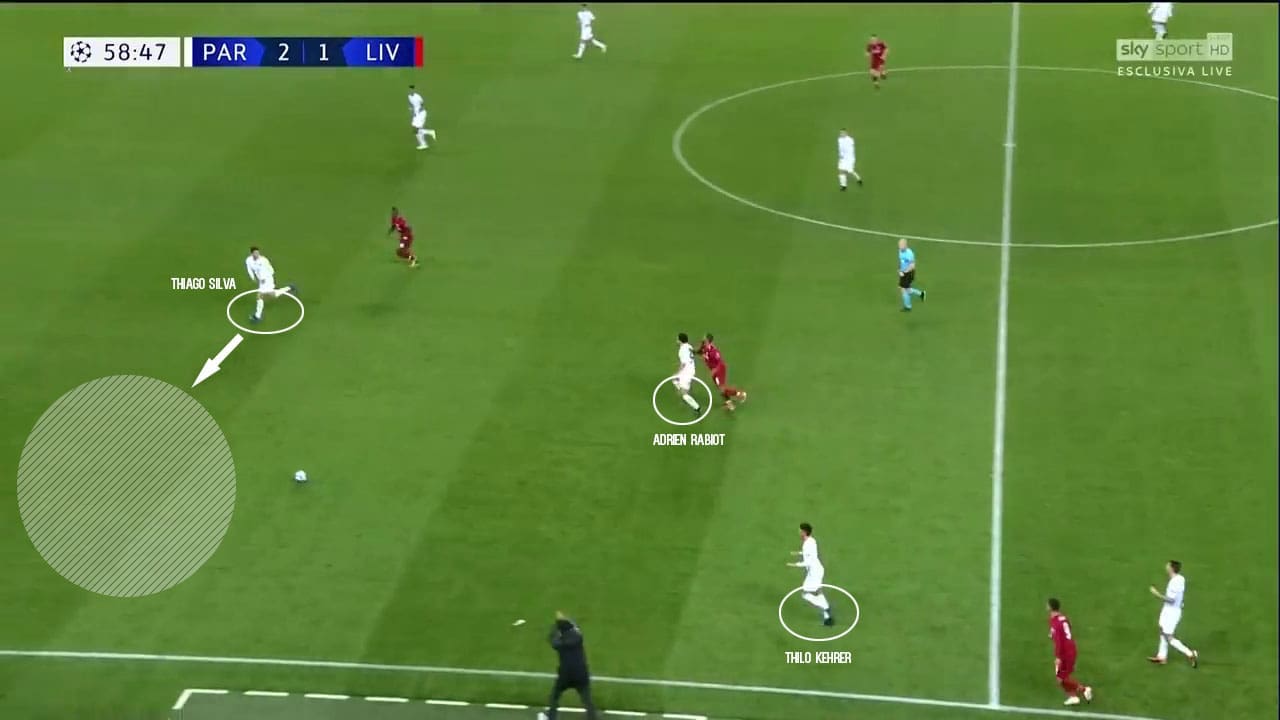
Continuing with the Liverpool example, Firmino is looking to exploit the space in behind Thilo Kehrer by playing in Georginio Wijnaldum or Sadio Mané. Kehrer has pushed up without adequate cover to plug the gap and could open up an opportunity for Liverpool to attack PSG’s goal.
Luckily for the German, Thiago Silva and Adrien Rabiot both use their vast experience to track their runners and cover for Kehrer’s aggressive play.
High press
Thilo Kehrer’s aggressive play style could be an extremely useful attribute for a team that will look to press higher up the pitch. Liverpool and Chelsea under Jürgen Klopp and Maurizio Sarri respectively have instilled a philosophy of pressing from the front. One can envision Thilo Kehrer being converted into an aggressive deep-lying midfield lynchpin with his qualities for specific game plans.

Another key asset in Kehrer’s repertoire is his tackling ability. His ability in one-on-one situations is quite adept for a player his age. He uses his tackling to good effect by complementing his aggression, and often tries to make the right decisions instead of rushing into rash tackles. This is arguably his strongest capability as a defender, as he wins 41.3% of his average 19.29 duels attempted per game. His success rate will increase as he gains more experience and learns from the likes of Thiago Silva, not to mention a certain Brazilian full-back in Dani Alves.
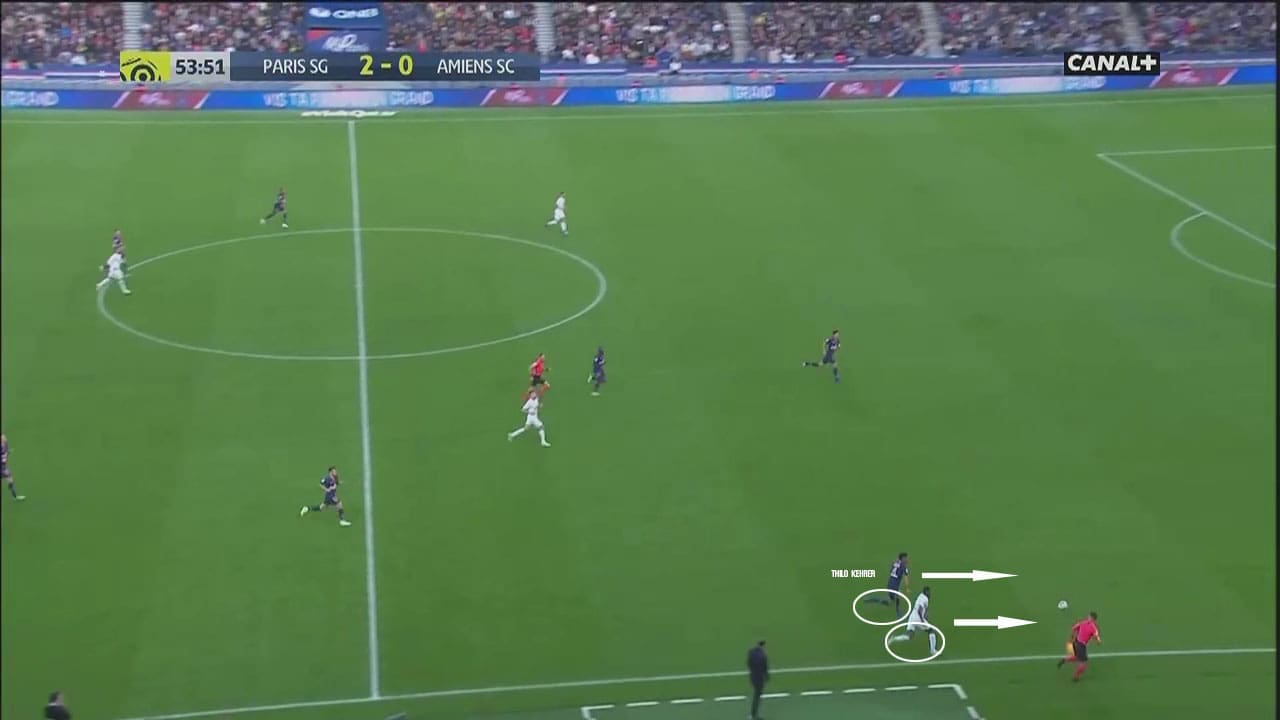
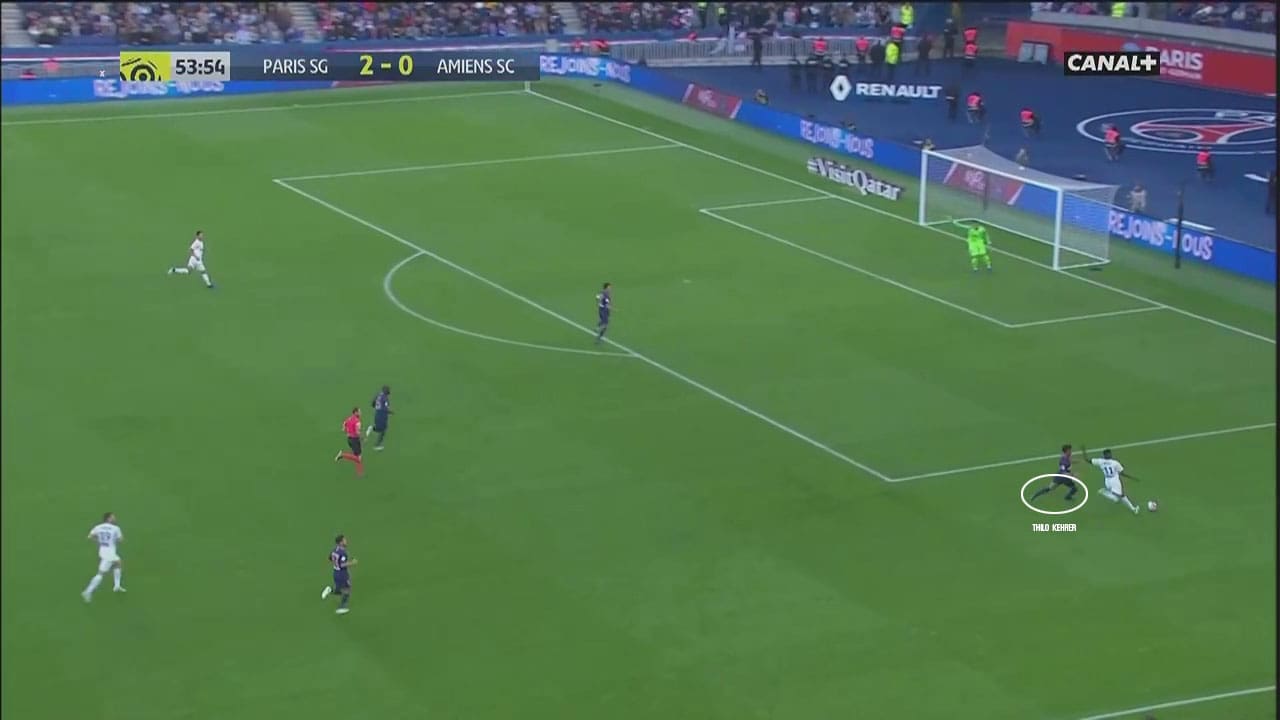
Here we can see Kehrer in a foot race against the Amiens winger. The German needs to stay within touching distance and not allow Amiens a route back into the match. As he races him to the byline, Kehrer’s pace allows him to put in a well-timed tackle that clears the ball out for a throw-in. If he solely relied on his pace then chances are we’d have seen a last-ditch tackle that could have given away a needless free kick in a dangerous area. Instead, we saw him combine his two strongest abilities and defend diligently.
Along with his tackling his interceptions have played a part in his defending, both aerially and on the ground. The German attempts 5.05 interceptions per game. This is a crucial number, with many teams in Ligue 1 counter-attacking the French champions making defensive positioning and cutting out crosses a priority.
Even against the bigger teams PSG have been put on the back foot through constant pressure, causing them to turtle up and change into a narrower shape. Teams they dominate see them play slightly wider and use the midfield two or three to create space for Neymar, Kylian Mbappé and Edinson Cavani.
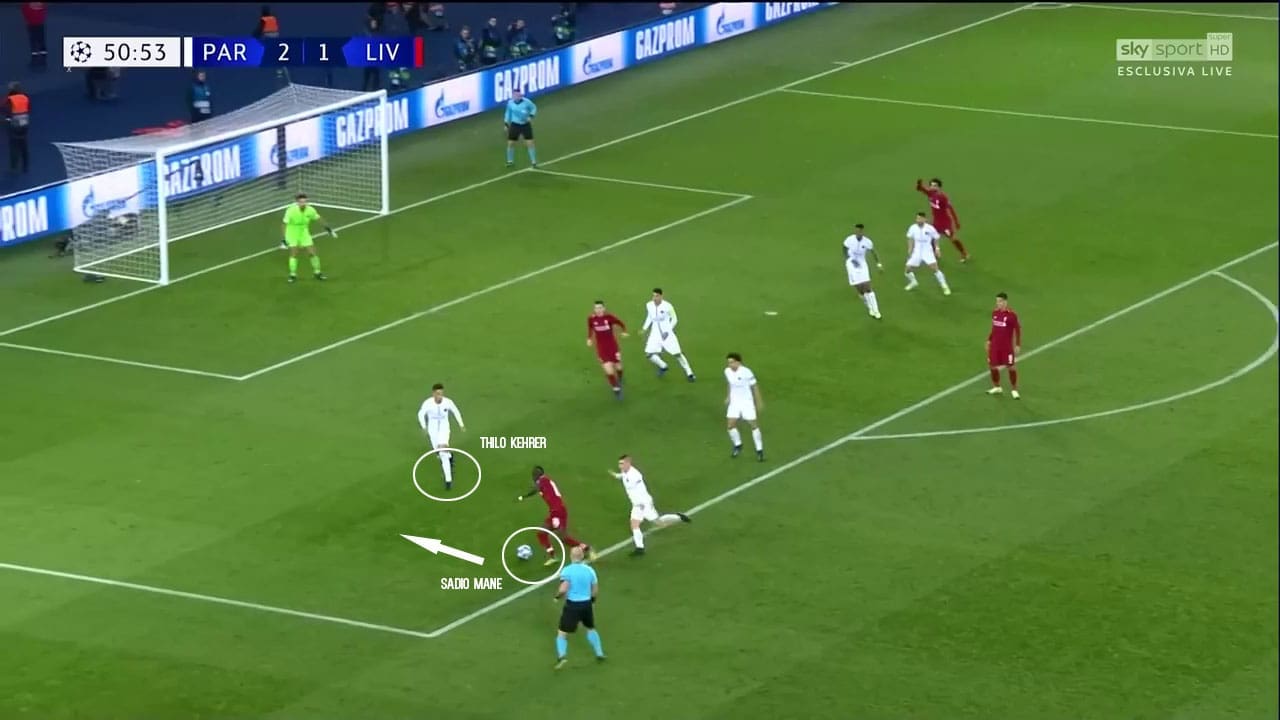
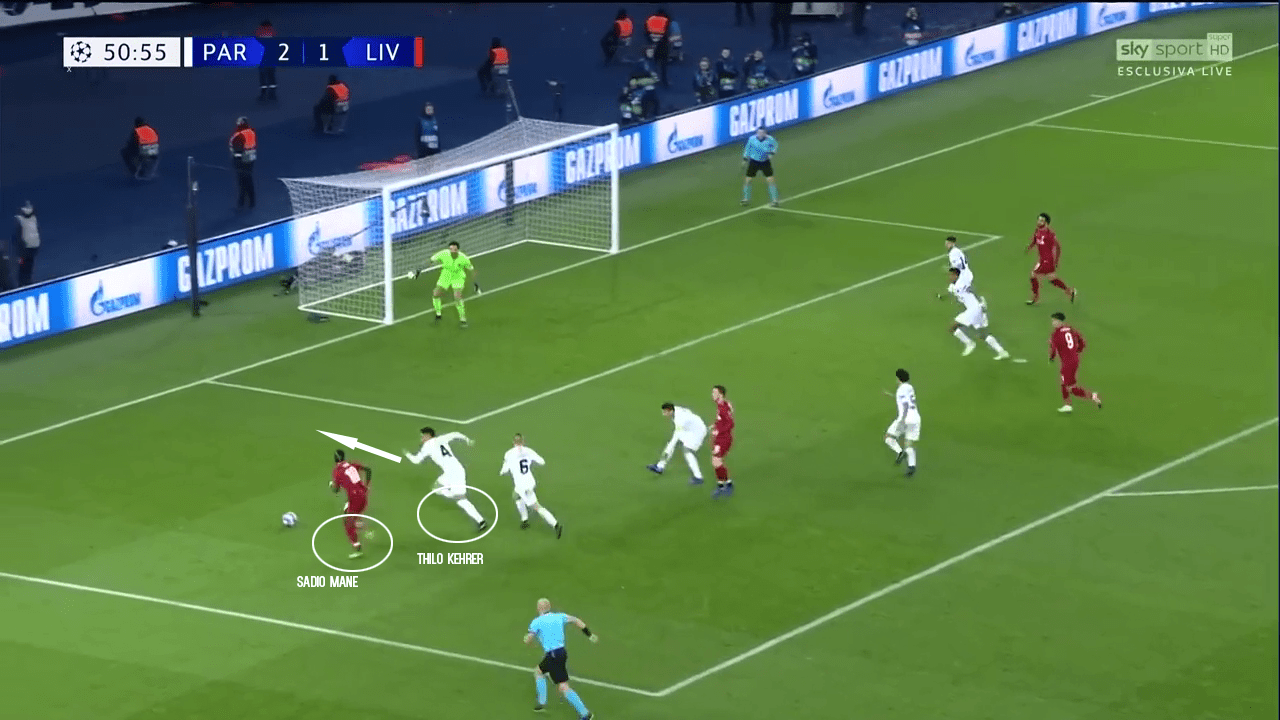
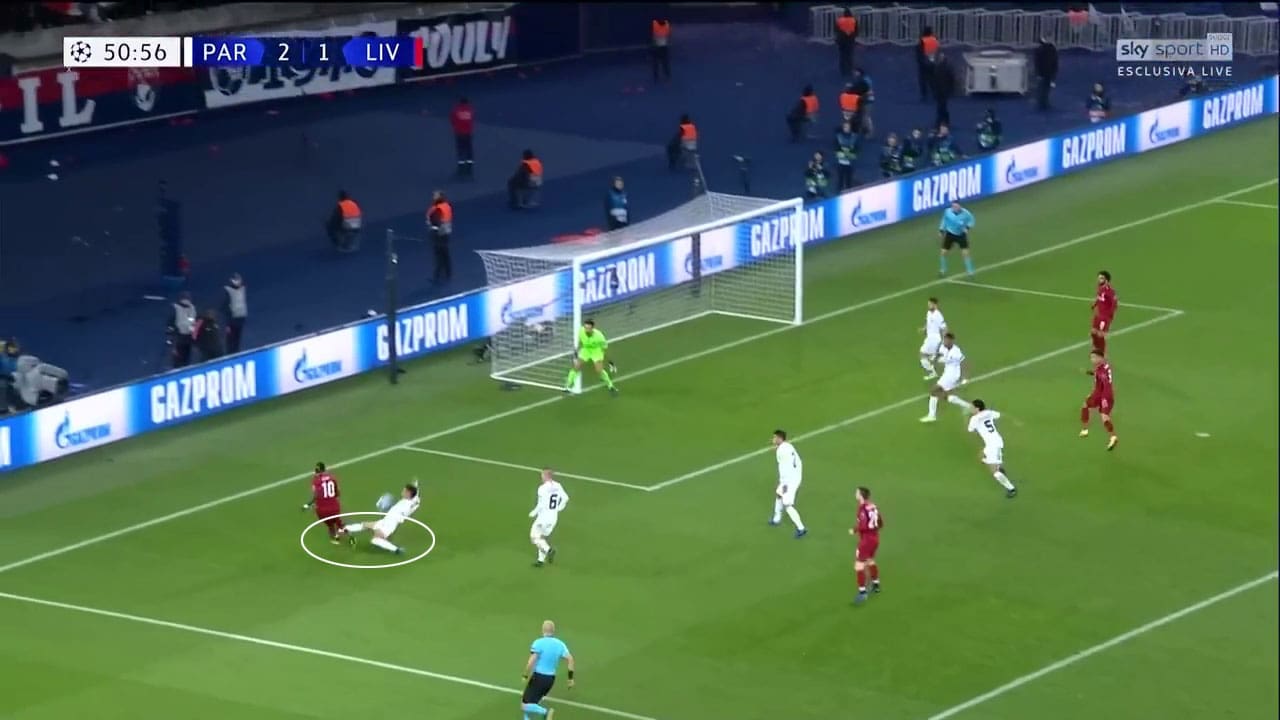
The match against Liverpool in the Champions League group stages was a major highlight as one of PSG’s biggest tests of the season. This was especially true for their defence, as they were tested against arguably the most venomous attacking trident of the season.
Here we can see Kehrer in a good starting position against Sadio Mané. The Senegalese winger will inevitably look to use his speed and beat Kehrer to the byline and send in a dangerous cross. Mané’s agility and acceleration are too much for Kehrer as he gets ahead of the German defender, but Kehrer manages to catch up and throw his body in the way of the ball. His bravery and willingness to defend when the pressure is at its highest proves his transfer to PSG was no mistake.
Safe hands
Thilo Kehrer is young and will improve as he gains more experience playing regularly in Ligue 1 and the Champions League. The future of Paris Saint-Germain looks secure with Kimpembe, Marquinhos and Kehrer all under 25 and able to be integrated into the team together, thanks for Kehrer’s versatility of playing right-back.
With Thiago Silva and Dani Alves getting older, Kehrer has the opportunity to cement either position as his own and become one of the best defenders in world football. He can push Mats Hummels and Jerome Boateng for a starting spot in the German national team alongside Joshua Kimmich and Jonas Hector. Keep an eye out for this talented German defender this season, especially in the upcoming Champions League round of 16 tie against Manchester United next month.
If you love tactical analysis, then you’ll love the digital magazines from totalfootballanalysis.com – a guaranteed 100+ pages of pure tactical analysis covering topics from the Premier League, Serie A, La Liga, Bundesliga and many, many more. Buy your copy of the January issue for just ₤4.99 here, or even better sign up for a ₤50 annual membership (12 monthly issues plus the annual review) right here.

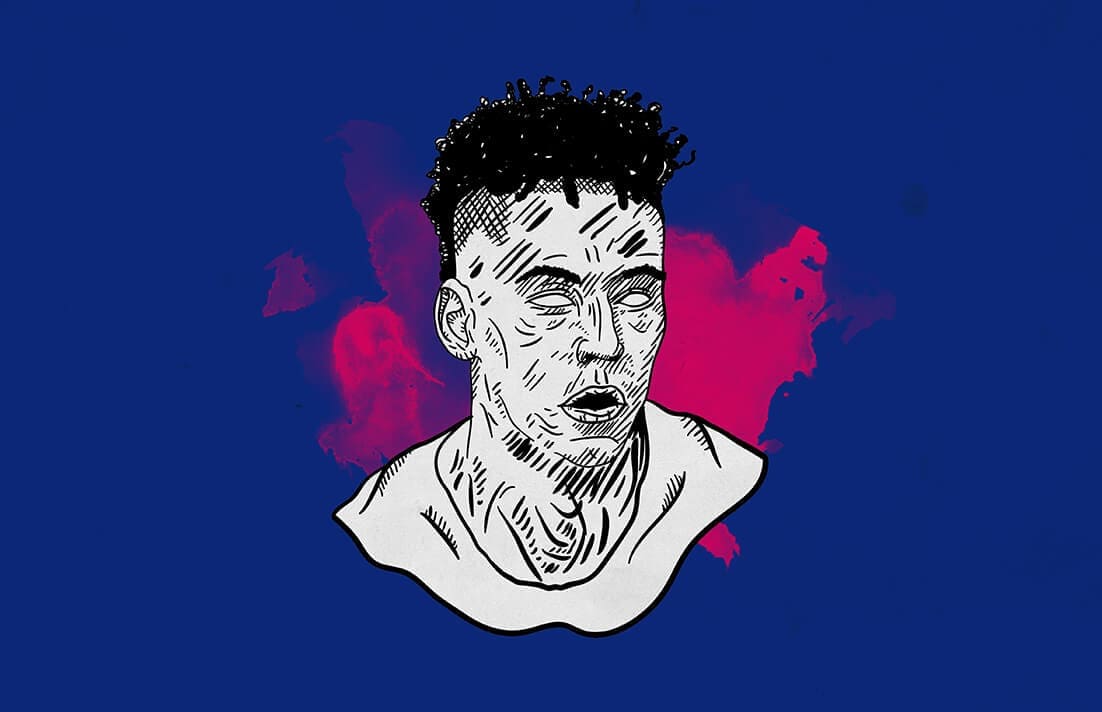




Comments